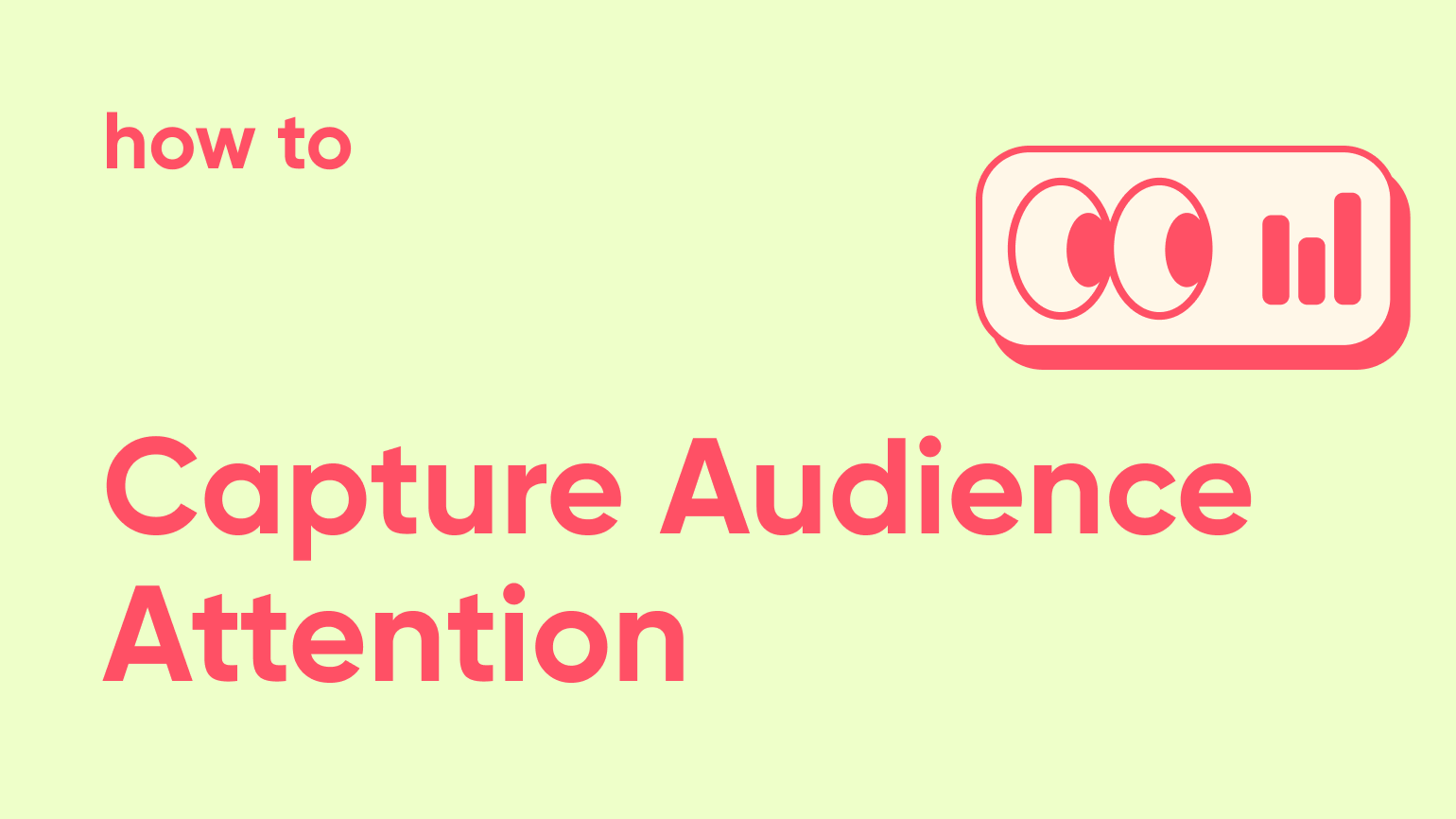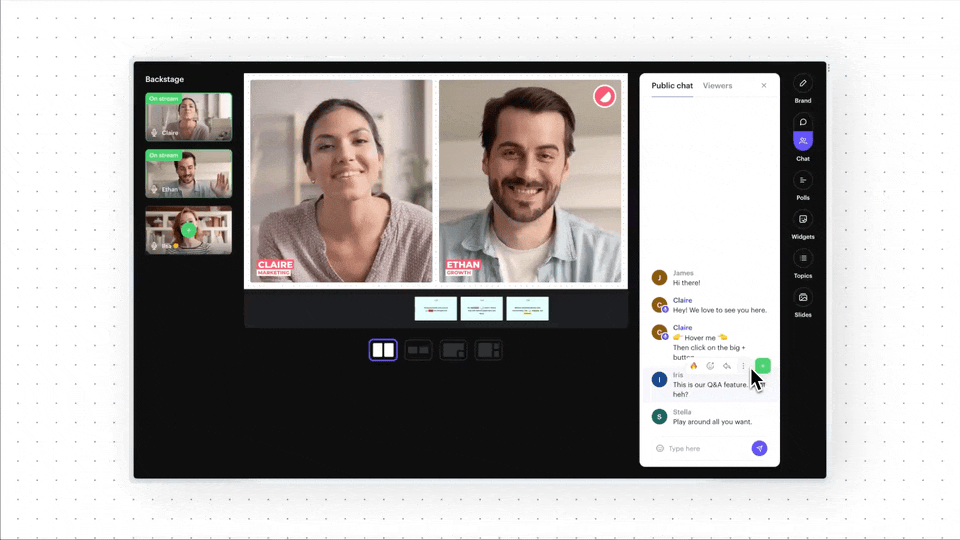How to Create Engaging Webinars that Capture Audience Attention

Webinars have become an essential tool for businesses to connect with their audience and deliver valuable content. But not all webinars are created equal. In order to truly capture audience attention and make an impact, you need to understand the psychology behind effective webinar content.
In this blog post, we will explore key strategies and techniques for hosting engaging webinars that keep your audience captivated from start to finish. Whether you are hosting a structured presentation or an interview-style webinar, these principles apply for both formats.
Everything in this article comes from a webinar that we hosted with Dean Waye.
The Importance of the Webinar Introduction
The introduction of a webinar starts even before you go live, with the webinar's title. But let's focus on the live.
The first few minutes of a webinar are crucial for capturing the attention of your audience. During this time, the audience is making a judgment about whether the webinar is worth their time and attention. Unfortunately, many companies waste this valuable courtesy attention by discussing housekeeping items or presenting an agenda.
To make the most of the courtesy attention, it is important to avoid wasting it on irrelevant information. Instead, use this time to establish a gap or cold open that hooks the audience and makes them feel understood. By doing so, you can immediately engage the audience and set the stage for the rest of the webinar.
One effective way to create a gap or cold open is to challenge a commonly held belief or introduce a recent change or a unique perspective. This encourages the audience to pay attention and keeps them curious about what you will say next.
Building Trust and Establishing Expertise
Once you have captured the audience's attention, it is crucial to establish your expertise and build trust. Many companies make the mistake of focusing on their expert authority or credentials right at the beginning of the webinar. However, this can be off-putting for the audience, as they want to feel understood and connected before they are willing to trust your expertise.
Instead, open with a gap or cold open, and then establish your expertise by explaining why you are uniquely qualified to speak on the topic. This approach creates a narrative arc that captures the audience's attention and builds trust by showing that you understand their reality.
Keeping Audience Attention Throughout the Webinar
Once you have established the gap and your expertise, it is important to keep the audience engaged throughout the rest of the webinar. This is where structure and techniques become crucial.
One effective technique for keeping audience attention is the call forward and call back. In a call forward, you preview what will be covered later in the webinar, creating anticipation and guiding the audience's attention. Then, in a call back, you refer back to the earlier previewed content and deliver on the anticipation.
Another effective technique is the use of interstitial slides. These are simple slides that interrupt the pattern of your regular slides and feature a short declarative sentence. The interruption surprises the audience and grabs their attention, keeping them engaged and curious about what comes next.
Additionally, you can use audio called fly fishing to re-engage audience members who may have momentarily become disengaged. By pausing and allowing silence after an important point and then resuming, you prompt those who may have become distracted to refocus their attention on the screen.
Pivots are also effective techniques for maintaining audience attention. A deep dive pivot involves delving into one specific aspect of your content in detail, while a horizontal pivot introduces a different perspective or use case for your product or service. These pivots add variety to your presentation, keeping the audience interested and engaged.
Engaging the Audience in the Q&A
The Q&A portion of a webinar provides an opportunity to directly engage with the audience and answer their questions. However, it is important to approach the Q&A section with a carefully planned strategy.
One effective strategy is to have prepared questions ahead of time. These questions should be designed to create interesting responses and encourage further engagement from the audience. However, it is important to ensure that these questions are audience-centered and not self-centered.
The Q&A portion is also an opportunity to be wobbly and disrupt the routine. By deliberately misunderstanding or challenging assumptions, you can prompt the presenters to provide more engaging and thought-provoking responses. However, it is crucial to strike a balance and avoid going too far off-track.
The Role of the Webinar Platform
While content is key to a successful webinar, finding the best webinar platform plays a crucial role in facilitating engagement and interaction with the audience. A good webinar platform should make it easy for presenters to connect with the audience and encourage active participation.
Contrast is a webinar platform that is specifically designed to enhance audience engagement. With features like Topics, Q&A, polls and a rich chat, Contrast empowers presenters to deliver engaging and interactive webinars that captivate the audience's attention.

Contrast also automatically manages your webinar registration pages and has everything you need to send emails (reminders and followups) to your audience members.
Conclusion
Creating engaging webinars that capture audience attention requires careful planning and execution. By understanding the psychology behind effective webinar content, you can design a webinar that captivates your audience from start to finish.
Remember to focus on the first few minutes to captivate the audience's courtesy attention and establish your expertise. Use techniques like call forwards and call backs, interstitial slides, and pivots to keep the audience engaged throughout the webinar. In the Q&A section, prepare thought-provoking questions and be wobbly to encourage further engagement from the audience.
Lastly, choose a webinar platform like Contrast that enhances audience engagement and provides the necessary tools and features to create an interactive and captivating webinar experience.
With these strategies, you can create webinars that not only educate and inform but also actively engage your audience and leave a lasting impact.


The New Way to Run Webinars
Start for free up to 30 registrants. No credit card needed.
Start for free